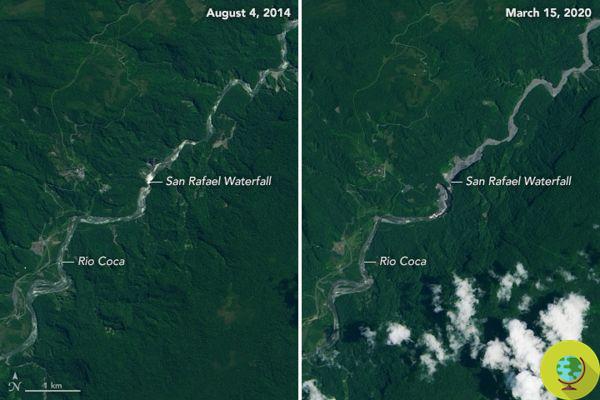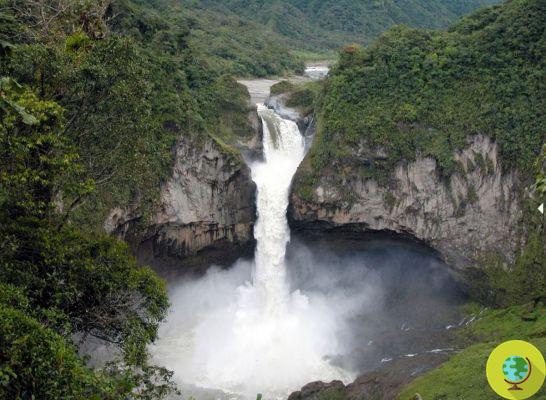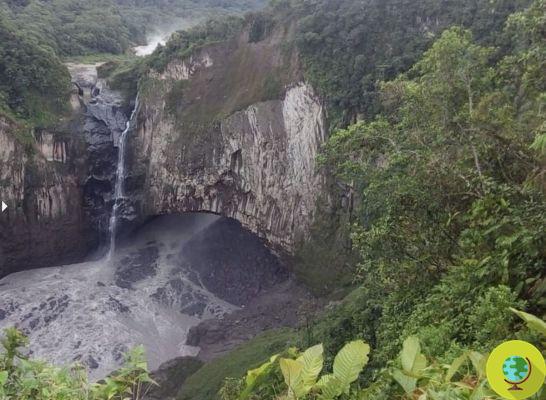San Rafael Waterfall was Ecuador's largest in the Cayambe Coca Ecological Reserve, but it no longer exists.
He is about to end up run over, his mother saves himSan Rafael Waterfall was Ecuador's largest in the Cayambe Coca Ecological Reserve, but it no longer exists. Every year it attracted thousands of people, now the water doesn't fall anymore. And the assumptions as to why still remain unclear. There is an ongoing investigation: some geologists think it is a natural phenomenon, others think that the disappearance is linked to the nearby hydroelectric plant.
Imposing and majestic with its 150 meters of water fall, the San Rafael waterfall, on the border between the provinces of Napo and Sucumbíos, between the Andean mountain range and the Amazon region, at the confluence of the Quijos and Salado rivers has now disappeared and in fact it no longer even appears on the official website of Ecuador which sponsored it as a tourist attraction.
“The waterfall has disappeared. It stopped flowing on February 2, 2020 ", NASA explains showing photos of the landscape before and after.

© NASA Earth Observatory by Lauren Dauphin
The iconic waterfall has been replaced by three streams that no longer allow the water to reach the end of the cliff and create a spectacular game. These new waterfalls, according to Alfredo Carrasco, geologist and former secretary of Natural Capital, cause a process of "regressive erosion", triggering a river upstream, which will change the morphology of the valley. Carrasco says that in 30 to 50 years these new falls could be three or five kilometers taller.
Experts from the Ministry of the Environment (MOE) in Ecuador confirm that the event occurred in February, but as to why investigations are still ongoing. There is some discrepancy with respect to whether this is due to a natural phenomenon or that it has influenced the construction of a hydroelectric power plant near the river inaugurated in 2016.
Index
Here's what the San Rafael waterfall was like:
There are also other hypotheses. The area is seismic and volcanic. “There are a lot of pretty intense earthquakes here. In March 1987, a very strong one appeared which caused enormous damage to the trans-Ecuadorian oil pipeline that passes right here “, Carrasco continues. “That year I had the opportunity to assess the impact of the earthquake in that area. There have been floods up to 20 meters above the level of the valley where the river passes ”.
Emilio Cobo, coordinator of the South American Water Program at the International Union for the Conservation of Nature (IUCN), fears the Environment Ministry will not be able to definitively report on what happened in San Rafael.
PRIMA

©Mae Ecuador
AFTER

©Mae Ecuador
"It must be very difficult to measure what happened, I'm not sure the ministry has the capacity to investigate it."
According to reports from Mongabay, it is very important for Cobo to know whether erosion in the area has been monitored before and after the construction of the hydroelectric power plant by Coca Codo Sinclair, one of the largest in the country.
The diversion tank of the Coke Elbow Sinclair it is located about 20 kilometers upstream of the San Rafael waterfall. This is one of eight hydroelectric plants built by Chinese companies or financed by Chinese banks in Ecuador, part of its electricity matrix transformation plan that has hitherto largely depended on coal-fired power plants.
The job, built by Sinohydro and funded by China EximBank, had problems with cost overruns, worker strikes, and incidents such as the 2014 collapse of a pressure well that killed 14 workers. It opened in 2016, four years after planned.
According to Emilio Cobo, the hydroelectric plant is however indirectly linked to the collapse of San Rafael.
“The Coca Codo Sinclair plant is not located on the river, but the diversion tank has a system of sand traps that remove sediment so as not to compromise its operation. When a river loses sediment, the water increases its erosive capacity. Large reservoirs and dams typically trap more than 90%, and sometimes 100%, of the incoming sediment, ”says Cobo.
Regardless of the cause, Nasa writes, Ecuador's tourism ministry does not plan to rebuild the river bed or restore the San Rafael waterfall and now there are fears of the consequences of the lack of water downstream of the waterfall for production activities, but also for biodiversity and wildlife. The waterfall is now part of the story.
Sources: Nasa / Mongabay / Ecuador Ministry of the Environment
Read also:
- Nicoletta waterfall, the hidden spectacle of the Nebrodi Park (VIDEO)
- The spectacular English waterfall that flows backwards, that's why (VIDEO)
- Venta Rapid: the extraordinary lowest waterfall in the world and widest in Europe (PHOTO and VIDEO)


























